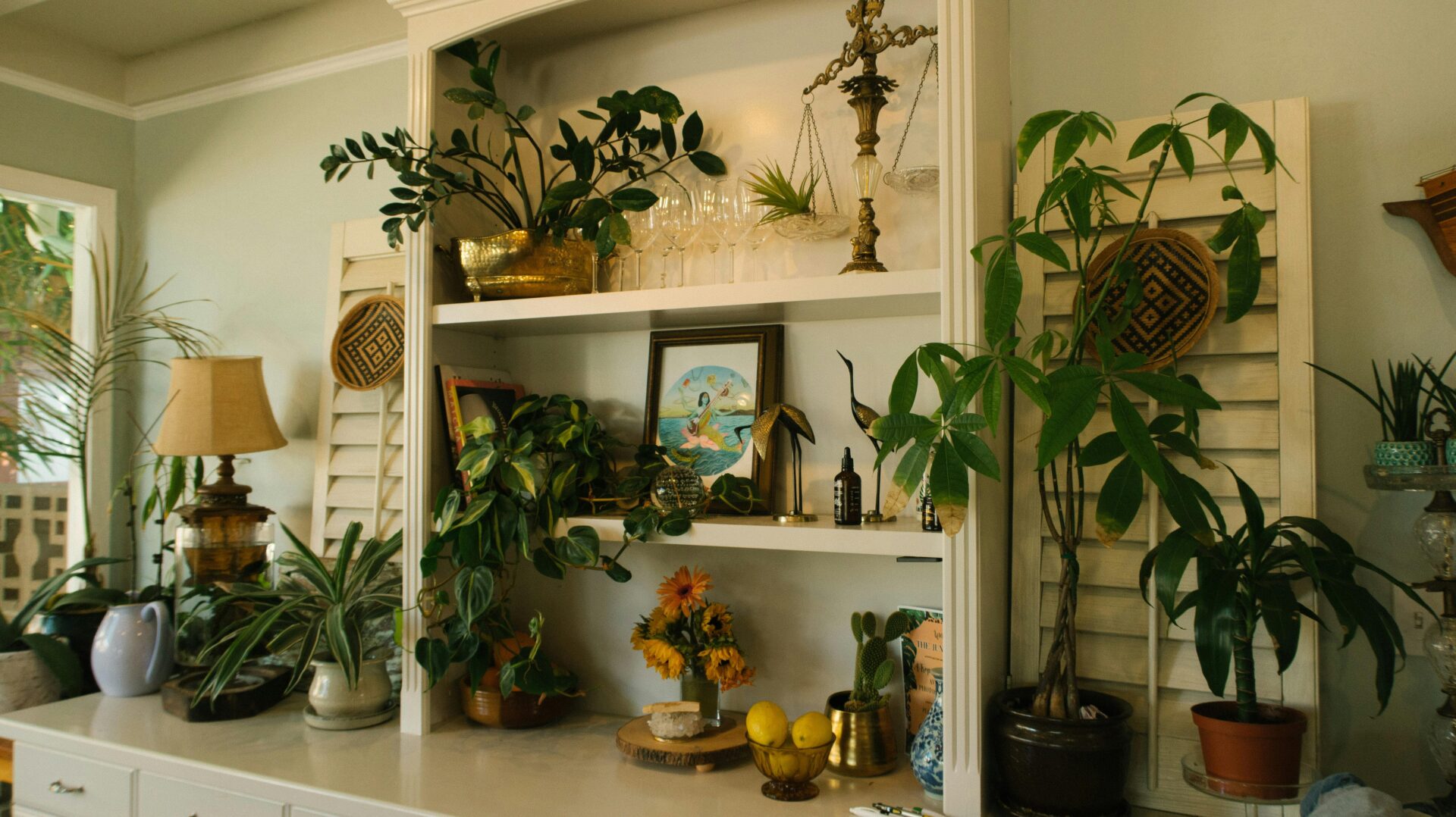Are you looking to add a touch of nature to your living space? Indoor tabletop plants are the perfect solution! These compact green companions not only purify the air but also bring life and charm to any room. Let’s explore 10 delightful options that will transform your home into a lush oasis.
Succulents: Low-maintenance beauties
1. Jade plant (Crassula ovata)
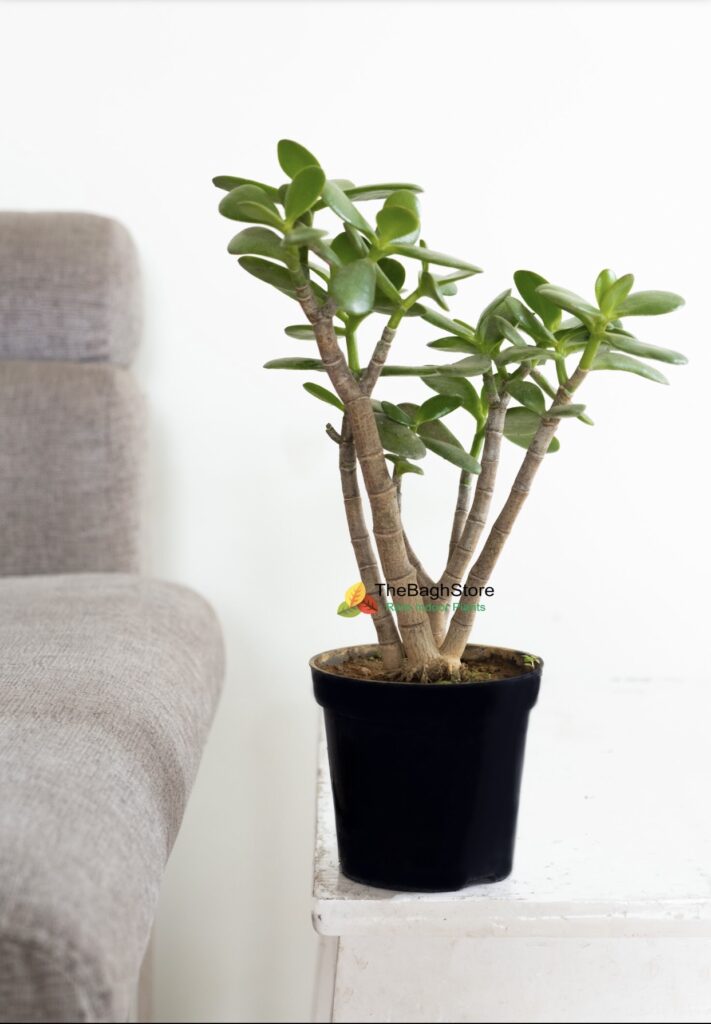
The jade plant, also known as the money tree, is a popular choice for indoor tabletops. Its thick, oval-shaped leaves and sturdy stems make it a resilient option for beginners.
| Pros | Cons |
|---|---|
| Low water needs | Slow growth |
| Symbolizes good luck | Can be toxic to pets |
| Long lifespan | Needs bright, indirect light |
Caring for your jade plant:
- Light: Prefers bright, indirect light but can tolerate some direct sun
- Water: Allow soil to dry completely between waterings
- Soil: Well-draining cactus or succulent mix
- Temperature: 65-75°F (18-24°C)
Fun fact: In feng shui, jade plants are believed to attract wealth and prosperity, making them popular gifts for new businesses or homes.
2. String of pearls (Senecio rowleyanus)
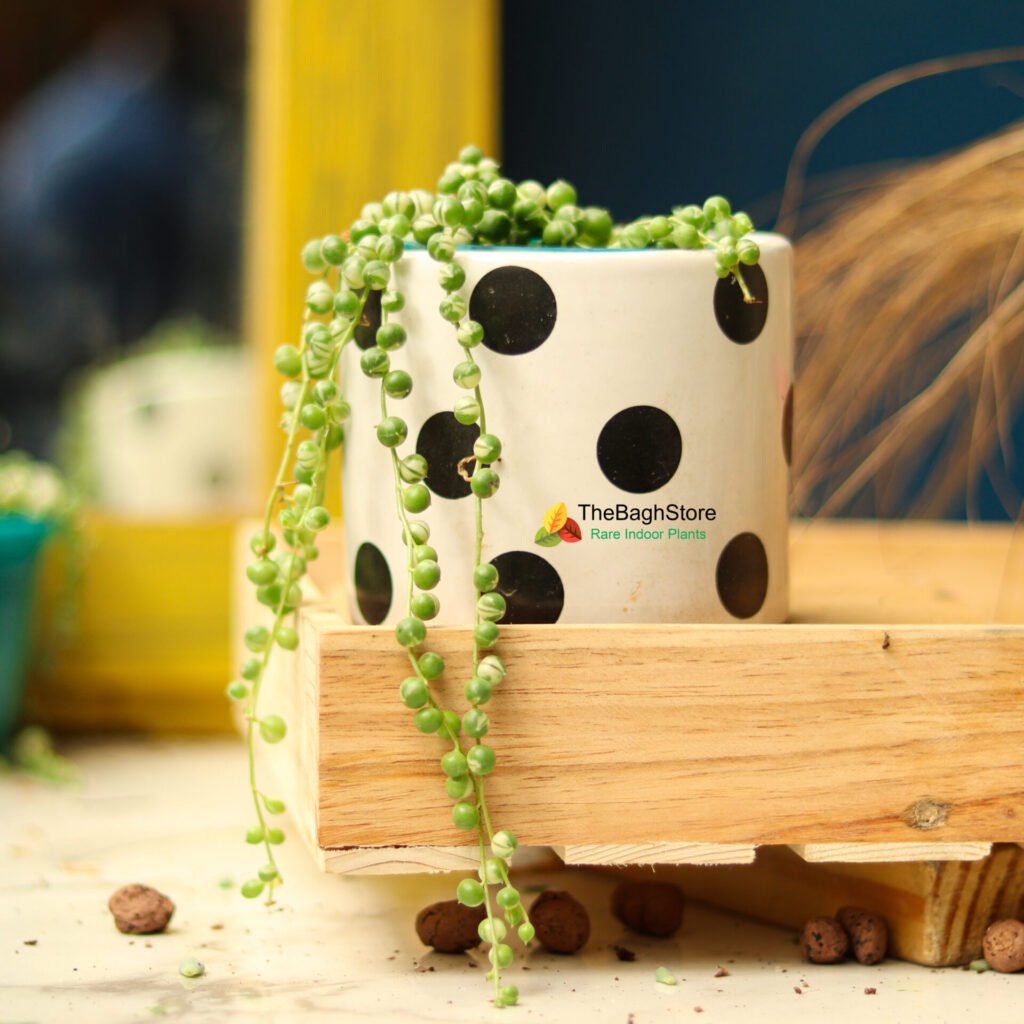
This unique succulent features cascading stems adorned with small, spherical leaves resembling pearls. It’s perfect for hanging baskets or as a tabletop centerpiece.
| Light requirements | Water needs | Growth rate |
|---|---|---|
| Bright, indirect | Low | Moderate |
Caring for your string of pearls:
- Light: Bright, indirect light
- Water: Water thoroughly when the soil is dry to the touch
- Soil: Well-draining cactus or succulent mix
- Humidity: Tolerates low humidity
Pro tip: To encourage fuller growth, gently prune your string of pearls and place the cuttings back into the soil to root.
Air-purifying wonders
3. Chinese evergreen (Aglaonema)
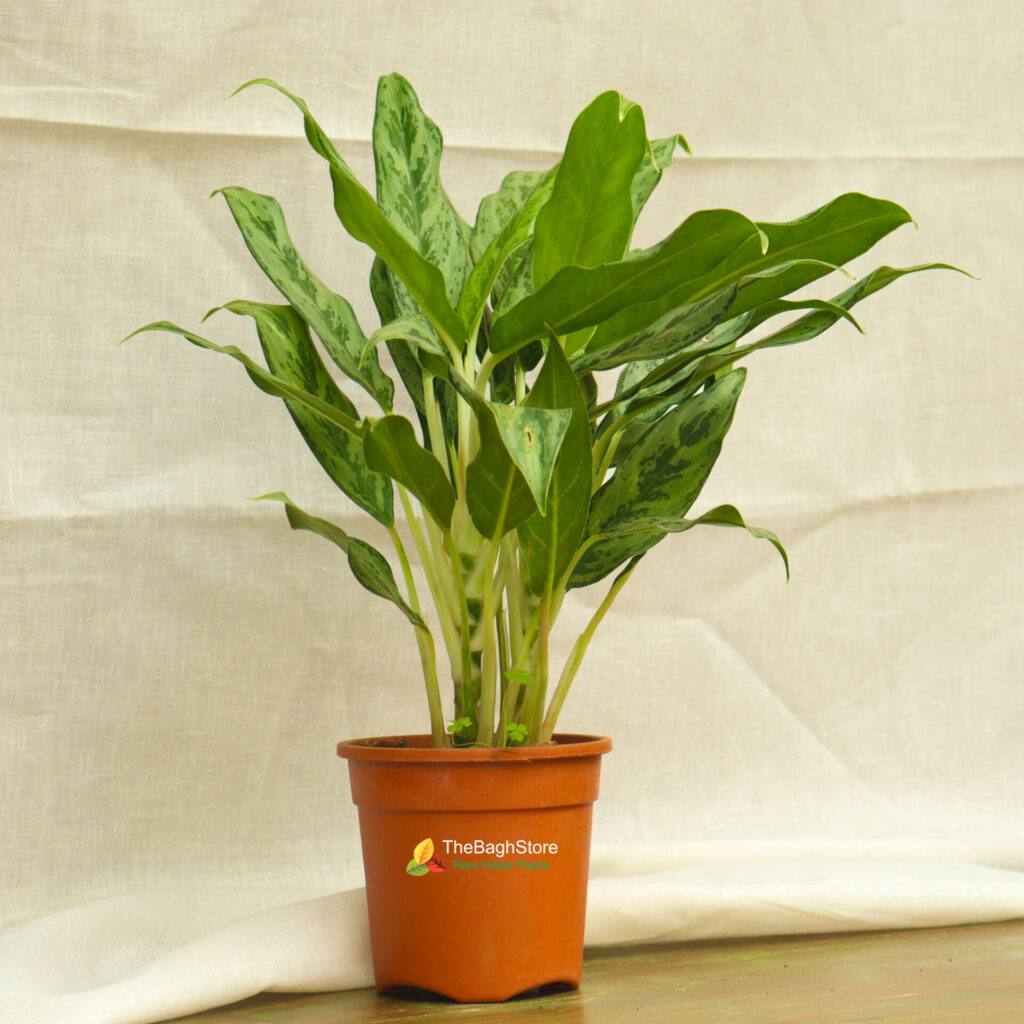
The Chinese evergreen is renowned for its air-purifying abilities and striking variegated leaves. It’s an excellent choice for low-light environments, making it perfect for office desks or bedside tables.
Caring for your Chinese evergreen:
- Light: Tolerates low light but thrives in moderate, indirect light
- Water: Keep soil consistently moist but not waterlogged
- Soil: Well-draining potting mix
- Humidity: Prefers higher humidity but adapts to average home conditions
Interesting fact: In Chinese culture, these plants are considered lucky and are often given as housewarming gifts.
4. Snake plant (Sansevieria)
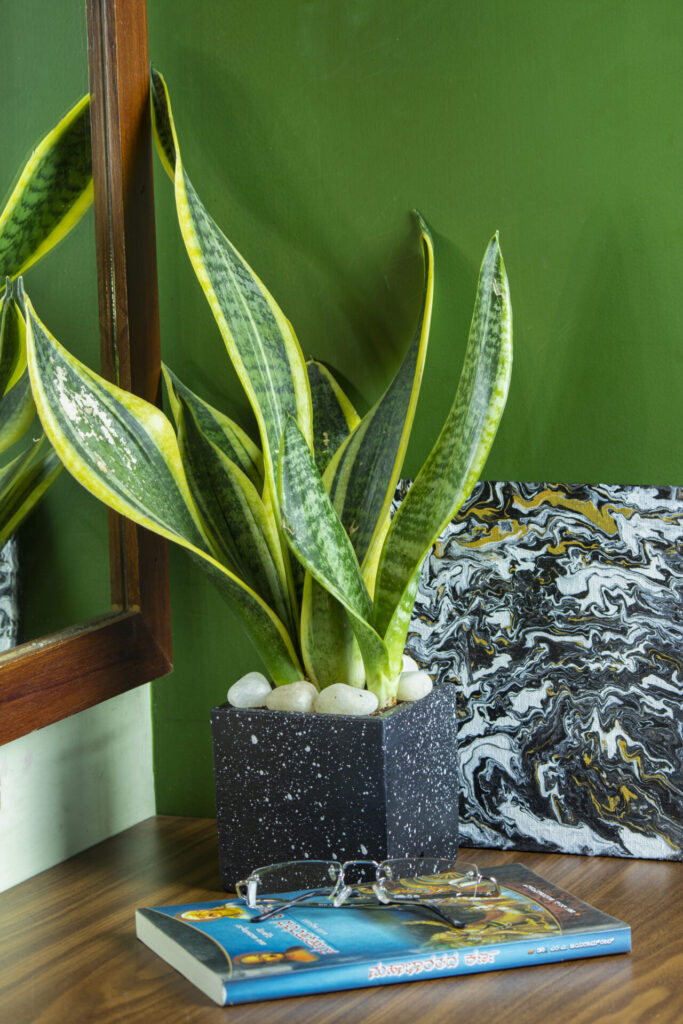
Also known as mother-in-law’s tongue, the snake plant is a hardy indoor plant that thrives on neglect. Its tall, upright leaves add a modern touch to any tabletop.
| Benefits | Care tips |
|---|---|
| Air purification | Allow soil to dry between waterings |
| Low maintenance | Tolerates low light conditions |
| Improves sleep quality | Propagates easily |
Caring for your snake plant:
- Light: Tolerates low light but grows best in indirect sunlight
- Water: Allow soil to dry completely between waterings
- Soil: Well-draining potting mix
- Temperature: 70-90°F (21-32°C)
Did you know? Snake plants are one of the few plants that convert CO2 to oxygen at night, making them excellent bedroom companions.
Tropical delights
5. Orchid (Dendrobium)
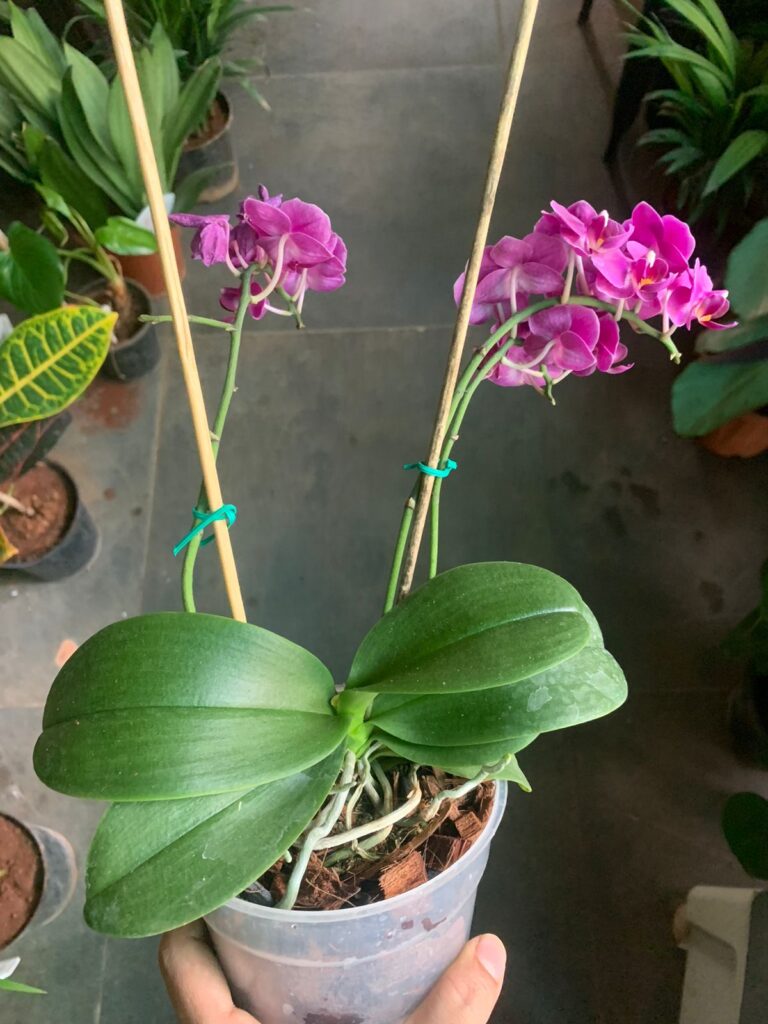
Orchids are the epitome of elegance. The dendrobium variety is particularly suitable for tabletops, with its long-lasting blooms and compact size.
| Flower colors | Blooming period | Light needs |
|---|---|---|
| Pink, purple, white | 6-8 weeks | Bright, indirect |
Caring for your dendrobium orchid:
- Light: Bright, indirect light
- Water: Allow top inch of soil to dry between waterings
- Soil: Specialized orchid mix or bark
- Humidity: Prefers higher humidity (50-70%)
Expert tip: After blooming, cut the flower spike back to the base to encourage future blooming.
6. Anthurium
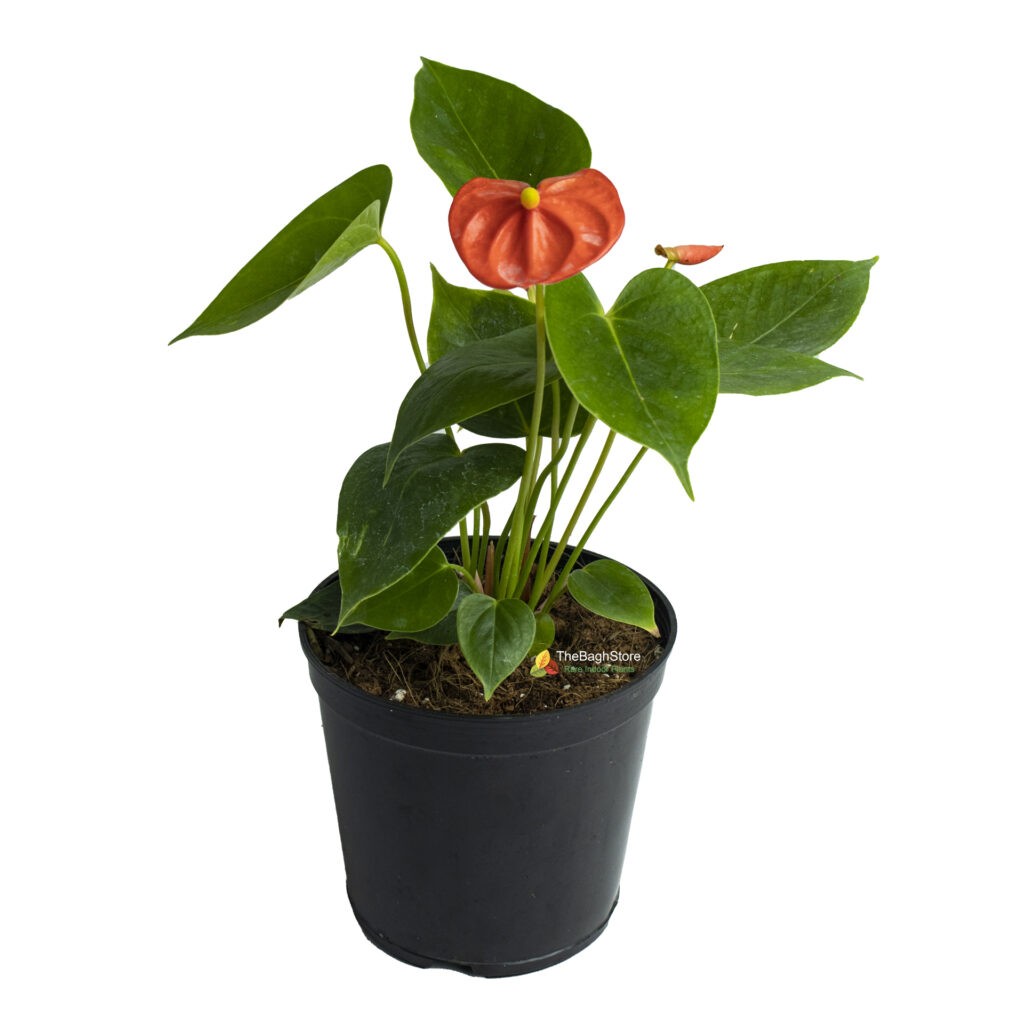
Known for its heart-shaped flowers, the anthurium adds a pop of color to any tabletop. It’s a low-maintenance plant that blooms year-round with proper care.
Caring for your anthurium:
- Light: Bright, indirect light
- Water: Keep soil consistently moist but not waterlogged
- Soil: Well-draining, airy potting mix
- Humidity: High humidity (60-80%)
Fun fact: What we consider the anthurium’s flower is actually a modified leaf called a spathe. The true flowers are tiny and found on the spadix (the spike in the center of the spathe).
Quirky conversation starters
7. Pilea peperomioides (Chinese money plant)
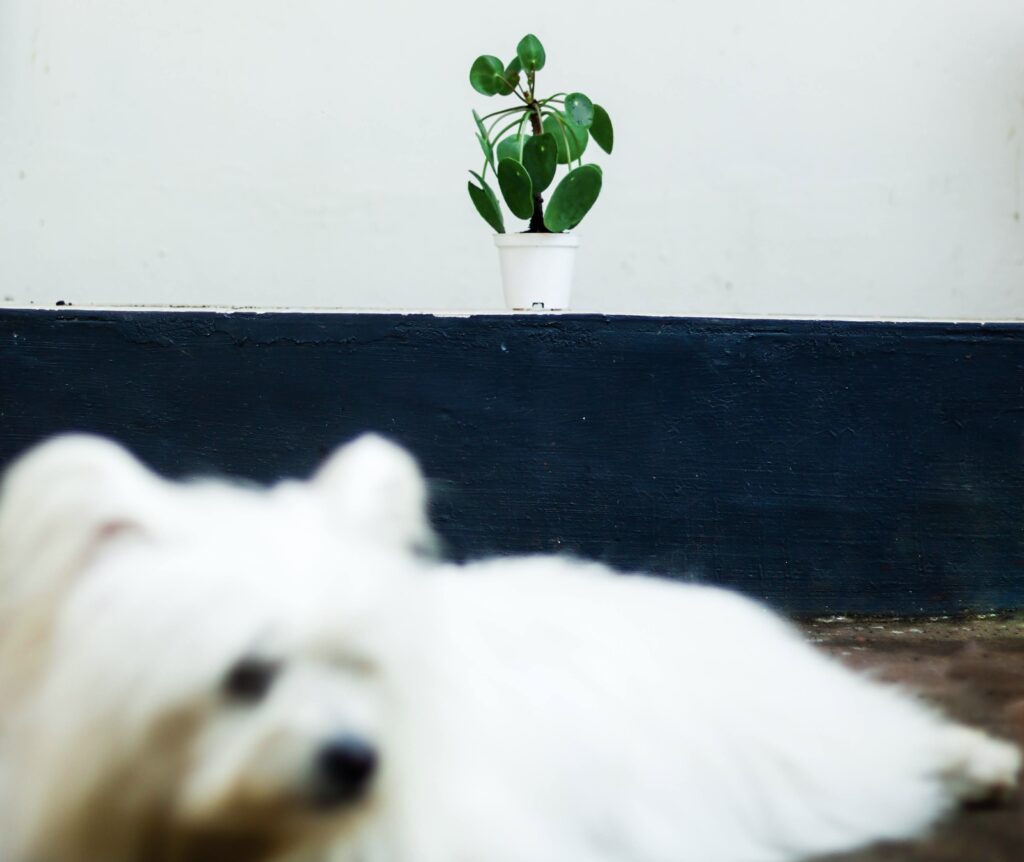
The Chinese money plant is a trendy choice with its unique, coin-shaped leaves. It’s said to bring good fortune and is perfect for modern, minimalist decor.
| Propagation method | Growth habit | Watering frequency |
|---|---|---|
| Offsets | Compact, upright | Once a week |
Caring for your pilea:
- Light: Bright, indirect light
- Water: Allow top inch of soil to dry between waterings
- Soil: Well-draining potting mix
- Rotation: Rotate regularly for even growth
Interesting tidbit: The pilea is also called the “friendship plant” because it produces so many offsets that are easy to share with friends.
8. Air plant (Tillandsia)
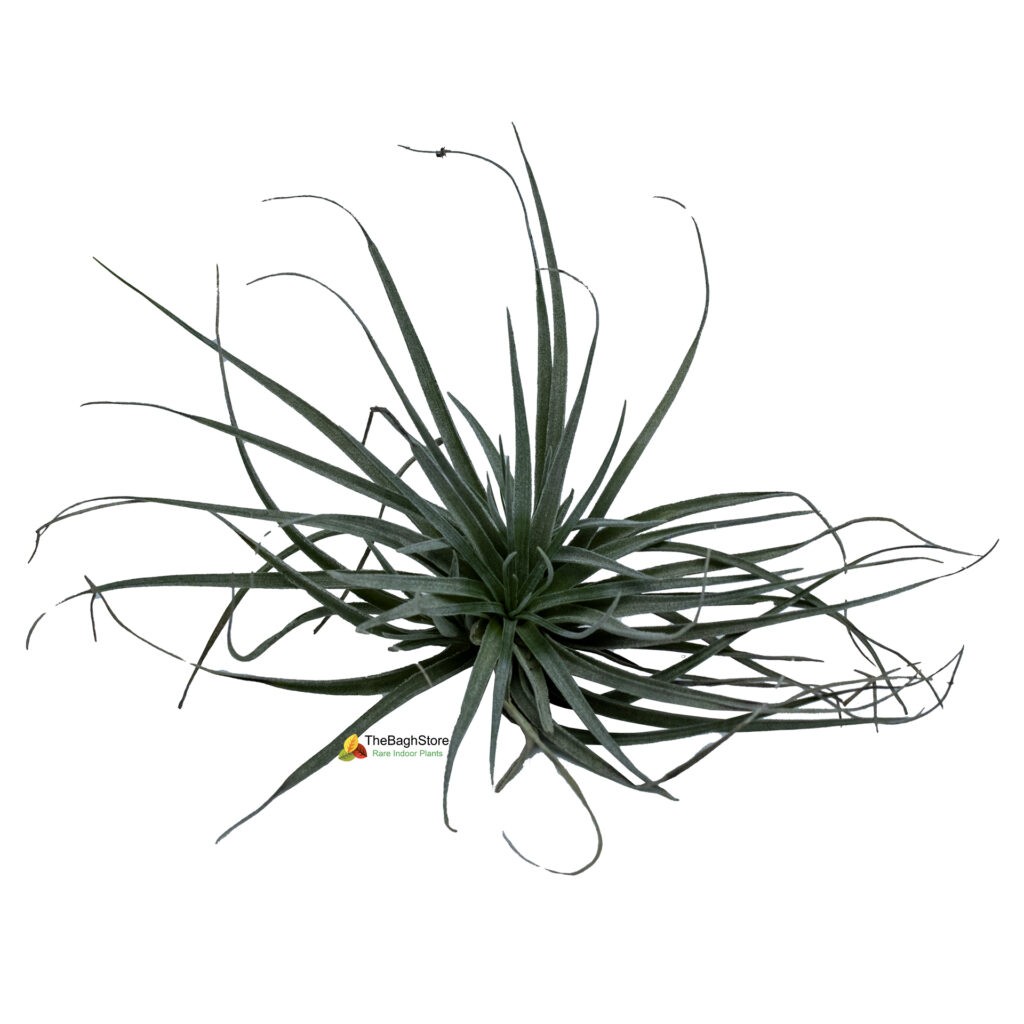
Air plants are the ultimate low-maintenance option. These soilless wonders can be displayed in various creative ways, making them perfect for small spaces.
Caring for your air plant:
- Light: Bright, indirect light
- Water: Soak in water for 20-30 minutes every 1-2 weeks
- Air circulation: Good air flow is crucial
- Fertilizer: Use a specialized air plant fertilizer monthly
Leafy greens for visual impact
9. Philodendron birkin
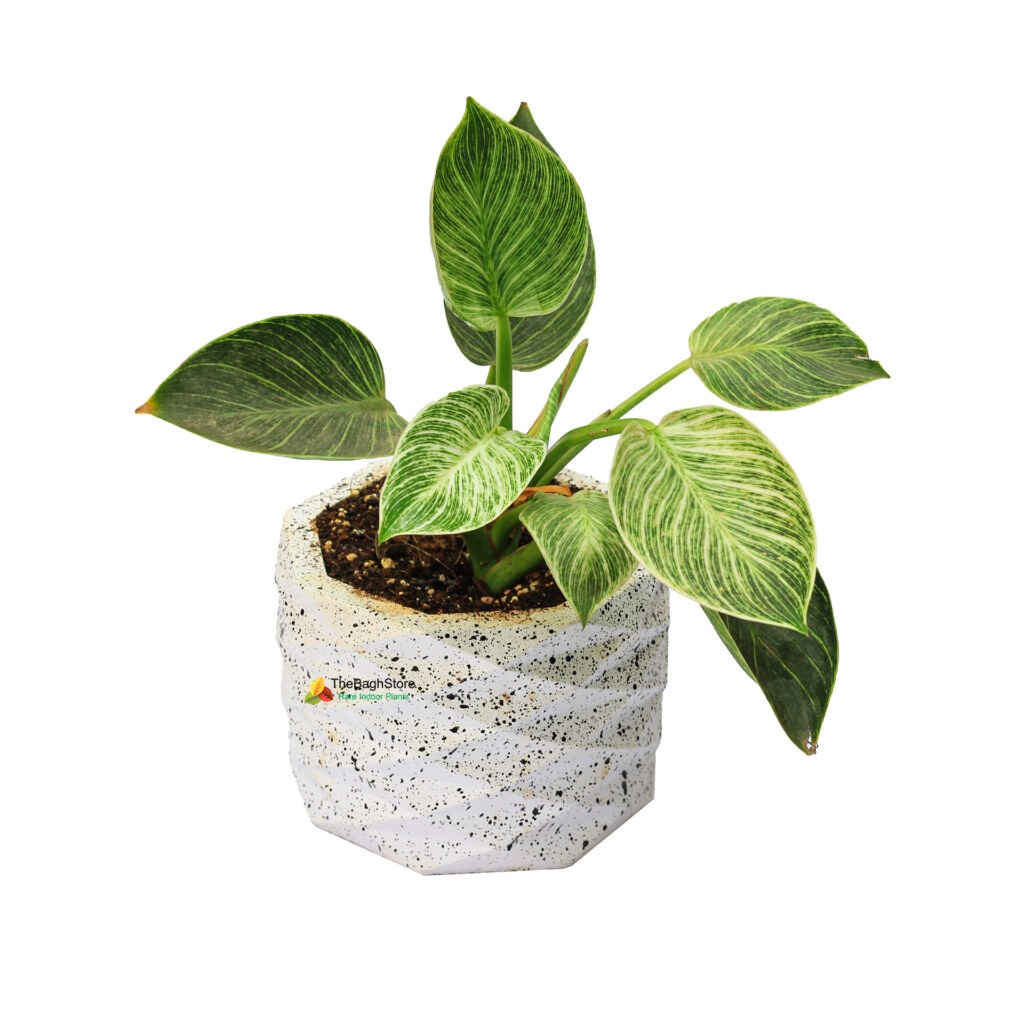
The philodendron birkin is a stunning variety with dark green leaves adorned with white pinstripes. It’s a compact plant that adds a touch of sophistication to any tabletop.
| Leaf color | Mature size | Care level |
|---|---|---|
| Green with white stripes | 1-2 feet | Easy |
Caring for your philodendron birkin:
- Light: Bright, indirect light
- Water: Allow top inch of soil to dry between waterings
- Soil: Well-draining potting mix
- Humidity: Moderate to high
Pro tip: The white stripes on younger leaves tend to be more pronounced. As leaves mature, they may develop more green coloration.
10. Calathea orbifolia
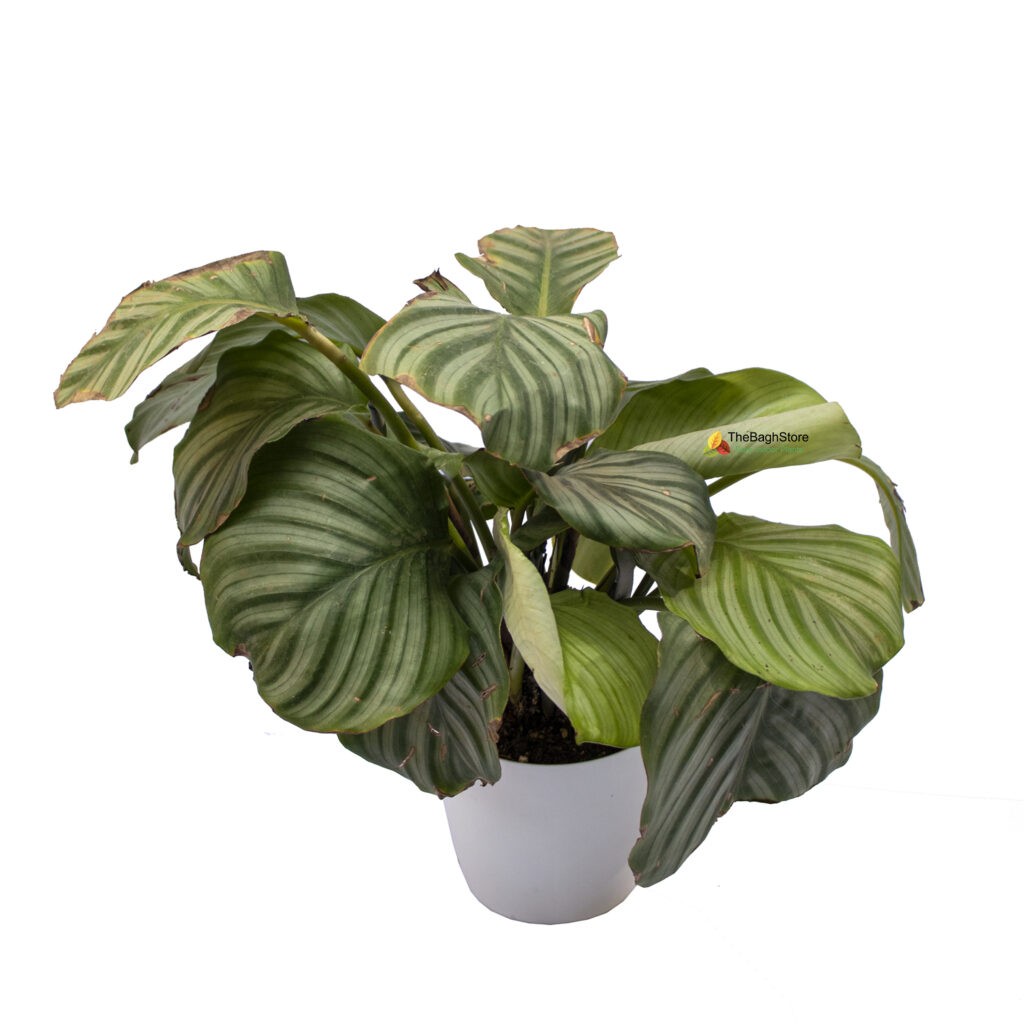
The calathea orbifolia boasts large, round leaves with stunning silver and green stripes. It’s a showstopper that brings a tropical feel to your indoor space.
Caring for your calathea orbifolia:
- Light: Medium to bright, indirect light
- Water: Keep soil consistently moist but not waterlogged
- Soil: Rich, well-draining potting mix
- Humidity: High humidity (60% or higher)
Interesting fact: Calatheas are sometimes called “living plants” due to their daily leaf movements, which resemble hands folding in prayer.
Caring for your indoor tabletop plants
To ensure your new green friends thrive, follow these general care tips:
- Light: Most indoor plants prefer bright, indirect light. Avoid placing them in direct sunlight, which can scorch their leaves.
- Water: Each plant has different water needs. Generally, it’s better to underwater than overwater. Check the soil moisture before watering.
- Humidity: Many tropical plants appreciate higher humidity. Consider using a pebble tray or misting regularly.
- Soil: Use well-draining potting mix suitable for each plant type. Succulents and cacti prefer sandy, fast-draining soil.
- Fertilizer: Feed your plants during the growing season with a balanced, water-soluble fertilizer.
- Pruning: Regular pruning helps maintain shape and encourages healthy growth. Use clean, sharp pruning shears for best results.
- Repotting: As your plants grow, they may need larger containers. Repot in spring using fresh potting mix.
Choosing the right pot
The right pot can enhance your plant’s beauty and ensure proper growth. Consider these factors when selecting a container:
- Size: Choose a pot slightly larger than the plant’s root ball to allow for growth.
- Drainage: Ensure the pot has drainage holes to prevent waterlogging.
- Material: Ceramic and terracotta pots are popular choices for their breathability and aesthetic appeal.
- Style: Select a pot that complements your decor. Concrete pots offer a modern look, while hanging planters add vertical interest.
Creating a tabletop garden
Why stop at one plant when you can create a stunning tabletop garden? Here are some ideas to get you started:
- Succulent arrangement: Combine various succulents in a shallow dish for a low-maintenance display.
- Terrarium: Create a miniature ecosystem using small plants, pebbles, and activated charcoal.
- Herb garden: Grow culinary herbs like basil and thyme for both beauty and functionality.
- Bonsai collection: Showcase the art of miniature trees with a jade bonsai.
Benefits of indoor tabletop plants
Incorporating plants into your living space offers numerous benefits:
- Air purification: Many indoor plants help remove toxins from the air, improving overall air quality.
- Stress reduction: Studies show that being around plants can reduce stress and increase feelings of well-being.
- Improved productivity: Plants in workspaces have been linked to increased focus and productivity.
- Humidity regulation: Transpiration from plants can help increase humidity levels, beneficial in dry indoor environments.
- Aesthetic appeal: Plants add color, texture, and life to any room, enhancing your home’s overall decor.
Conclusion
Indoor tabletop plants are a fantastic way to bring nature into your home or office. With so many options available, you’re sure to find the perfect green companion to suit your style and space. Remember to consider your plant’s specific needs and enjoy the process of nurturing your new leafy friends. Happy planting!

